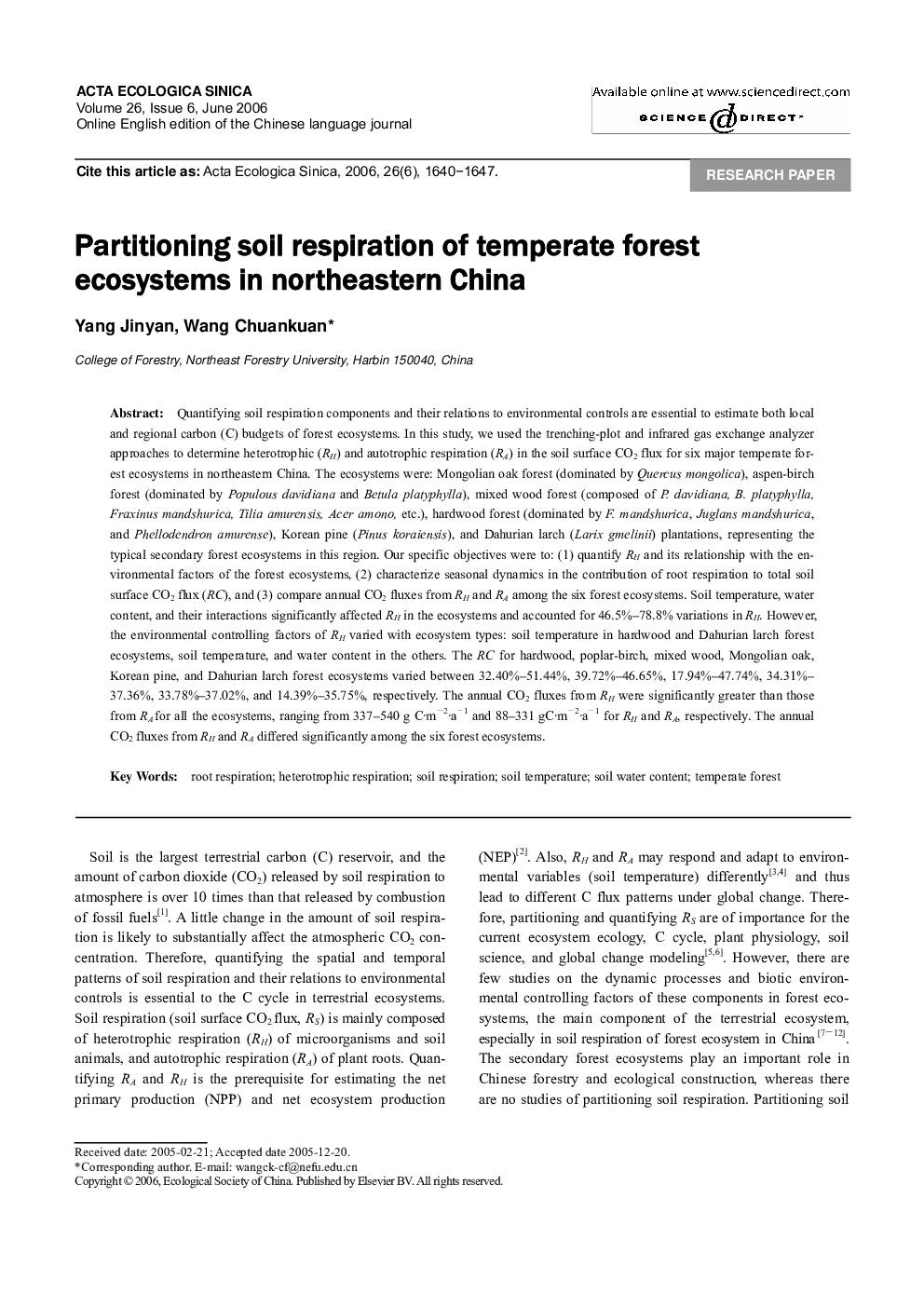| Article ID | Journal | Published Year | Pages | File Type |
|---|---|---|---|---|
| 4380481 | Acta Ecologica Sinica | 2006 | 7 Pages |
Quantifying soil respiration components and their relations to environmental controls are essential to estimate both local and regional carbon (C) budgets of forest ecosystems. In this study, we used the trenching-plot and infrared gas exchange analyzer approaches to determine heterotrophic (RH) and autotrophic respiration (RA) in the soil surface CO2 flux for six major temperate forest ecosystems in northeastern China. The ecosystems were: Mongolian oak forest (dominated by Quercus mongolica), aspen-birch forest (dominated by Populous davidiana and Betula platyphylla), mixed wood forest (composed of P. davidiana, B. platyphylla, Fraxinus mandshurica, Tilia amurensis, Acer amono, etc.), hardwood forest (dominated by F. mandshurica, Juglans mandshurica, and Phellodendron amurense), Korean pine (Pinus koraiensis), and Dahurian larch (Larix gmelinii) plantations, representing the typical secondary forest ecosystems in this region. Our specific objectives were to: (1) quantify RH and its relationship with the environmental factors of the forest ecosystems, (2) characterize seasonal dynamics in the contribution of root respiration to total soil surface CO2 flux (RC), and (3) compare annual CO2 fluxes from RH and RA among the six forest ecosystems. Soil temperature, water content, and their interactions significantly affected RH in the ecosystems and accounted for 46.5%–78.8% variations in RH. However, the environmental controlling factors of RH varied with ecosystem types: soil temperature in hardwood and Dahurian larch forest ecosystems, soil temperature, and water content in the others. The RC for hardwood, poplar-birch, mixed wood, Mongolian oak, Korean pine, and Dahurian larch forest ecosystems varied between 32.40%–51.44%, 39.72%–46.65%, 17.94%–47.74%, 34.31%–37.36%, 33.78%–37.02%, and 14.39%–35.75%, respectively. The annual CO2 fluxes from RH were significantly greater than those fromRA for all the ecosystems, ranging from 337–540 g C·m−2·a−1 and 88‐331 gC·m−2·a−1 for RH and RA, respectively. The annual CO2 fluxes from RH and RA differed significantly among the six forest ecosystems.
